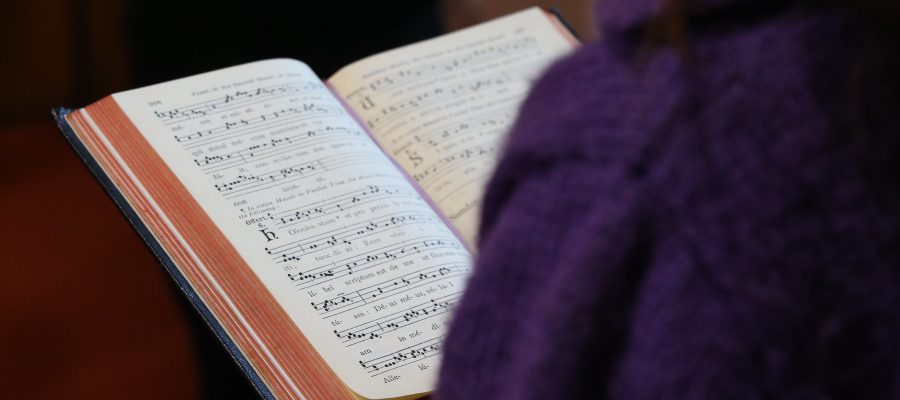A great prayer exercise for those involved in sacred music is to meditate on the texts of the propers (the changing prayers of the Mass) using the chant.
The western chant repertoire of the Church is an amalgamation of chants belonging to the different western rites, the final corpus being delineated by Pope Gregory the Great in the late 9th Century- giving it the nickname ‘Gregorian Chant.’ It would be a mistake to think that this is the beginning of the chant repertoire- the same mistake as thinking that the Tridentine Mass originates from the Council of Trent which simply codified and standardised the Latin Rite which can be traced back to the Apostles.
The chant repertoire is truly ancient with evidence dating some pieces to the early centuries after the death of the Lord and some even containing melodies that date back to the synagogue and which Jesus would have been familiar with (The Tonus Peregrinus for the last psalm at Sunday Vespers for example.). This post isn’t about the history of chant but about the true origin of the music, the final cause if you will.
I continually write about my belief that the chant repertoire is a result of meditation on the text and that it is the fruit of prayerful meditation– Lectio Divina in music. Beyond the beautiful simplicity, evocative modality and illuminative word painting, I believe that chant of the Church is divinely inspired by the Holy Spirit, the song of the Bride to the Bridegroom, expiring sighs of prayer throughout generations.
The following is not meant to be an expert musical analysis but just some prayerful insights from having sung through the chant. Even for those who have no musical knowledge, the text enlivened by the music carries the implicit resonance of truth and beauty.

- Today’s introit is in Mode 4 which classically connotes tenderness and delight- a contrast to the mode for other chants with a similar text- this chant is not penitential in a melancholic way. The confident cry for God to ‘hear my voice’ is contextualised by the psalm verse ‘the Lord is my light and my salvation, whom shall I fear?’ Notice that the voice reaches up to God as the chant ascends at ‘vocem meam.’
- The flattened ti (te) on adjutor, amidst an passionate and ascending accumulation of nuems reminds me of Marian motifs such as the begining of the chant antiphon- Ave Maria. Is it possible that the chant reflects Our Lady’s role as intercessor as we come before God, asking Him to hear our voice? In some ways the text mirrors the Magnificat- do not turn away from me, i.e. regard me in my lowliness, my saviour (my light and my salvation). Whom shall I fear- Non Timeas Maria. Our Lady prays with and for us and we in turn strive to approach God in a manner as perfect as She does.
- Neque despicias me- neither look away from me- on ‘pi’ and ‘as’ we see little ‘turn’ motifs
- At ‘Deus Salutaris’ we almost see an answer to the opening phrase of the chant which falls to the dominant, reaffirmimng the confidence of this supplication but the ‘salutaris’ changes direction with lost of melisma (sveral notes to a syllable) almost relishing the reality in the manner of a semi-jubilus (long, joyful melsimatic section at the end of the Alleluia before the Gospel). The phrase lifts us up and sets us back down a little higher than before. We are not there yet but need the ongoing cooperation with the grace of God in order to avail ourselves of that salvation.
These are merely what occurred to me today and like the scriptures themselves, new lights penetrate our should each time we revisit them.
Liturgical musicians– try praying with the chant
Clergy- Take measures to put this rich sung prayer of the Church in ‘pride of place’ in the liturgies in your parish. Whether appreciated explicitly or implicitly, the Chant is the song of Heaven and resonates in the soul of all who hear it. If you don’t know where to start, email me!
